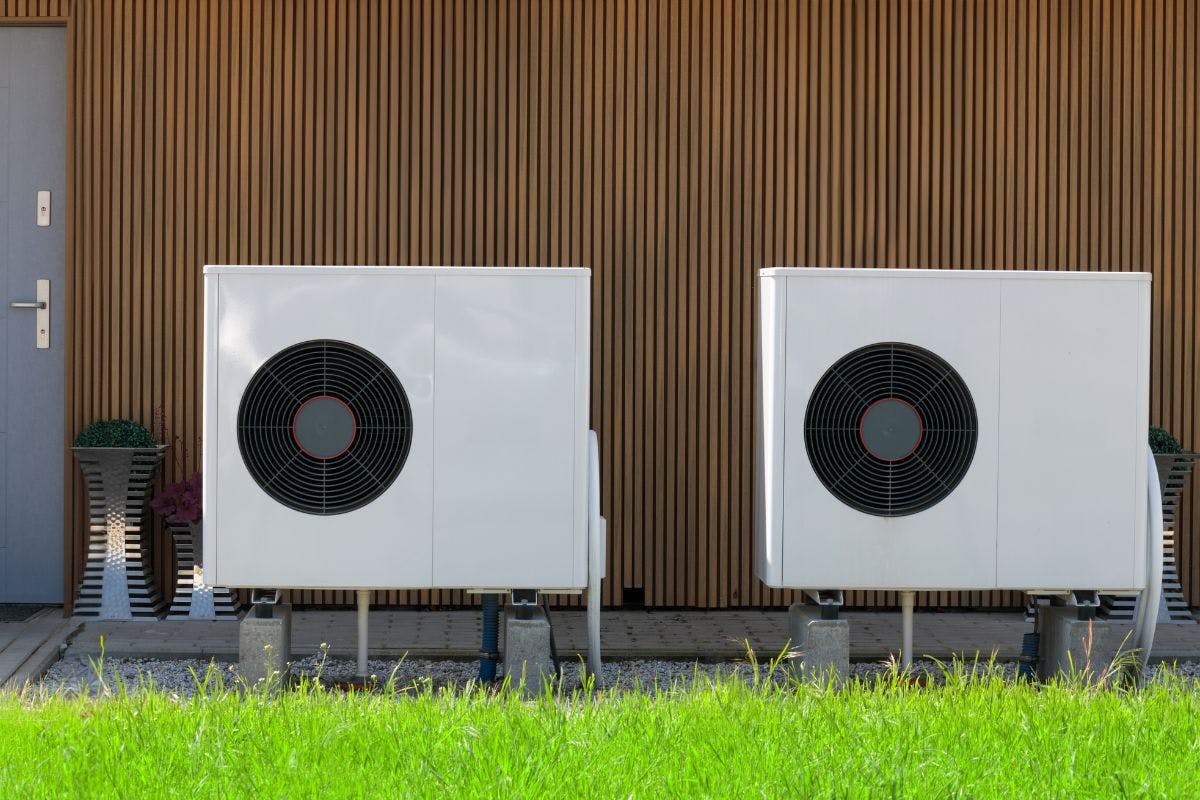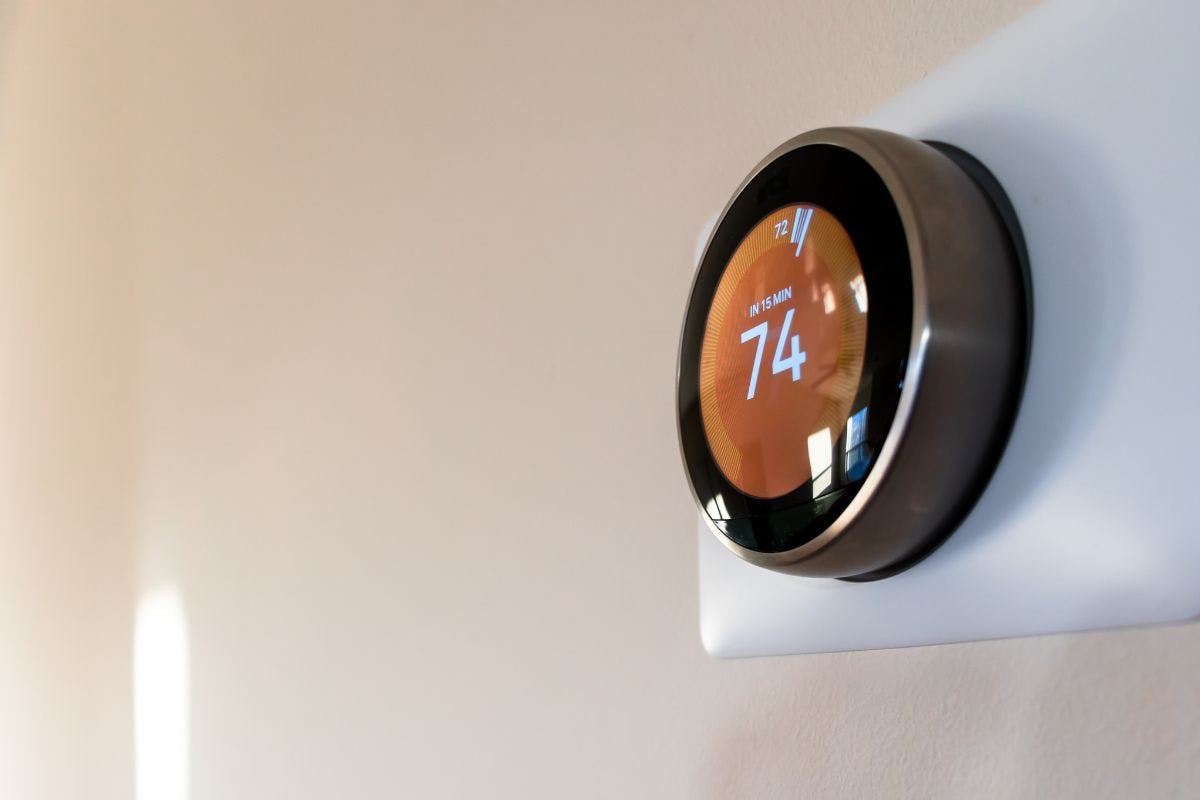Heat Pump Efficiency: What Do SEER and HSPF Mean?
Last edited

Author
Andrew Giermak
Solar and Electrification Writer and Editor

Editor
Andrew Blok
Electrification and Solar Writer and Editor

When choosing a heat pump for your home, understanding its key efficiency ratings is important to ensuring your home is comfortable and your energy bills are low. Two of the most important metrics are SEER2 and HSPF2, which measure a heat pump's efficiency in cooling and heating. Heat pumps don’t generate heat like a furnace or electric resistance heater. They move it into or out of your home, like a refrigerator that can also be reversed.
When you have a heat pump installed, a reputable HVAC expert can help you select which heat pump will be best for your home’s needs and climate’s demands. Still, understanding efficiency metrics can make you an informed consumer and ensure you get the best home heating and cooling solution.
See how much you can save with a new HVAC system from Palmetto
What Is SEER?
SEER is the seasonal energy efficiency ratio for HVAC systems. In short, the higher the SEER, the more energy efficient a heat pump is.
The ratio is calculated by taking the machine's cooling output over a typical cooling season and dividing it by the energy consumption. It measures how much heat is being removed from the air-conditioned space.
As heat pump technology has improved, SEER ratings have increased, and the minimum standard from the government, along with measures such as Energy Star certification, has changed. SEER2 is an updated measure that takes better account of cooling efficiency in real-world conditions. The ratio is lower than previous SEER numbers. The US Department of Energy began using the SEER2 as the standard measurement on January 1, 2023.
The US Department of Energy requires new residential heat pumps to have a 13.4 or higher SEER2 in the northern part of the US and 14.3 or higher SEER2 in the southeast and southwest regions. Heat pumps must have a 15.2 SEER2 or higher to be Energy Star certified.
Generally, the higher the SEER2 rating, the more expensive a heat pump is. At the same time, higher SEER2 usually equates to lower energy costs over time. Along with better heat-moving power, higher SEER2 units are better for reducing indoor humidity.
What Is HSPF?
A heat pump’s HSPF, or heating seasonal performance factor, measures the efficiency with which heat is output into a conditioned space. The higher the HSPF the more efficiently a system heats a home.
Similar to the math for a SEER number, HSPF is calculated by taking the total heat output during the heating season divided by the total electricity consumed. The US Department of Energy moved to a better measurement of real-world performance, HSPF2, on January 1, 2023. HSPF2 is calculated from testing with a wider range of temperatures and conditions.
The federal government requires all new heat pumps to have an HSPF2 of 7.5 or higher. Most new heat pumps have an HSPF2 of 8.2-10. Heat pumps must have a 7.8 HSPF2 to be Energy Star certified and a 9 or higher HSPF2 to be termed highly efficient.
Energy Guide labels on heat pumps and HVAC appliances show the SEER2 and HSPF2 numbers.
What Is Energy Star?
Energy Star, run by the US Environmental Protection Agency, certifies energy-efficient appliances, electronics, building supplies, and devices and provides a list of all certified products for consumers. Federal tax credits and other incentives for energy efficient devices often require Energy Star certification.
Energy Star has a list of certified ducted and ductless heat pumps, including lists of the most efficient heat pumps and heat pumps eligible for tax credits. These appliances are most likely to reduce your energy bill, energy usage, and environmental impact.
Is a Higher SEER Rating and a Higher HSPF Rating Better?
Higher SEER and HSPF ratings are better when looking at energy efficiency. They are better for a heat pump’s and home’s energy consumption and carbon footprint.
Whether a heat pump with higher SEER and HSPF ratings is better for your home is a little more subjective and depends on many factors. If you live somewhere where you rarely use the heat, a high HSPF isn’t very important.
Other considerations could include balancing a higher upfront cost vs savings on energy over time and your area’s utility rates. Having home solar panels or thinking about home electrification are also times when energy efficiency could be more important.
See how much you can save with a new HVAC system from Palmetto
Choosing the Right Heat Pump for Your Climate
Climate is a very important factor in choosing the right heat pump or HVAC system. What do you need from your heating and cooling during the hottest or coldest times of the year?
In hotter climates the SEER rating, cooling power combined with good efficiency, will be important.
For years, heat pumps were not frequently used in colder areas of the US. New technology has drastically improved heat pumps' ability to heat homes through most tough, long winters. In fact, heat pumps have exceeded installation goals in wintry Maine. Cold-climate heat pumps are designed to work efficiently to well below zero. Cold-climate heat pumps have an HSPF of 9-10.5.
Other Heat Pump Buying Considerations
Cost, performance, energy efficiency, and climate are some considerations when buying a new heat pump.
Coefficient of performance
Coefficient of performance, or COP, is another ratio that measures heat pump performance. It’s the units of heating or cooling output divided by the units of energy used. A higher COP means higher energy efficiency.
A COP from 3.0 to 4.0 is a highly efficient COP for a heat pump. A heat pump producing 4,000 watts of heat from 1,000 watts of electricity would have a 4.0 COP.
Noise level
Noise might be a factor in choosing the best heat pump for your home. A normal heat pump runs at 40-60 decibels, about the sound level of a normal conversation.
If your old heat pump is much louder than this, or if there are odd clicking, banging, or metallic sounds, it could be a sign of dirty filters, mechanical issues, obstructions in the fan, or bigger problems in need of professional service.
Price
The budget you have to work with and the importance of the upfront cost compared to potential long-term savings are factors you have to weigh. In general, higher efficiency heat pumps, with higher SEER and HSPF ratings, will be more expensive.
According to a variety of online sources, ducted heat pumps cost from about $5,000-$15,000, including installation. Ductless, or mini-split, heat pump systems span from $2,900-$17,800.
Size
Installing a system with the right size and power for your home is key. You should consider the size of your home, if you are going to a zoned heating and cooling system, and your heating and cooling habits. Do you have hot and humid summers? Are you working from home so someone’s usually home during the middle of the day? Everyone’s needs are different.
Warranty/service plan
A brand and company with a good warranty and/or service and maintenance plan could make a serious difference over the lifespan of your heat pump. Heat pumps should last 15 years or longer. Having the proper maintenance will increase that likelihood. A plan that cuts down the probability of a major repair bill or a shortened lifespan could be a better financial decision than saving a few bucks at the start.
Tax Credits and Rebates for Heat Pumps
The federal Energy Efficiency Home Improvement Credit applies to eligible heat pumps. Taxpayers can earn a credit of 30% of the cost of the new heat pump, up to $2,000 in credit. To claim the credit, taxpayers will need IRS Form 5695.
The credit, which was originally scheduled to last through 2032 will now expire on December 31, 2025.
States and localities may offer additional rebates, tax credits, and incentives. For instance, in North Carolina, the Home Electrification and Appliance Rebate program offers a rebate of up to $8,000 for the purchase and installation of an eligible Energy Star-certified heat pump.
See what an energy efficient heat pump or home solar panels can do for you today.
See how much you can save with a new HVAC system from Palmetto
Frequently Asked Questions
What’s a good SEER2 rating for a heat pump?
The US Department of Energy requires new residential heat pumps to have a 13.4 or higher SEER2 in the northern part of the US and 14.3 or higher SEER2 in the southeast and southwest regions. Heat pumps must have a 15.2 or higher SEER2 to be Energy Star certified. The highest SEER2 rating on the market now is 28.7.
What’s a good HSPF2 rating for a heat pump?
Heat pumps with an HSPF2 of 9 or higher are considered highly energy efficient. New heat pumps are required to have an HSPF2 of 8.2 or greater.
Does a higher SEER2 rating make a heat pump more expensive?
In general, yes, a higher SEER2 rating will tend to make a heat pump more expensive. Higher SEER2 heat pumps may be eligible for tax credits and rebates to bring the expense down. Higher SEER2 heat pumps should cost less to operate over the years.
Disclaimer: This content is for educational purposes only. Palmetto does not provide tax, legal, or accounting advice. Please consult your own tax, legal, and accounting advisors.



